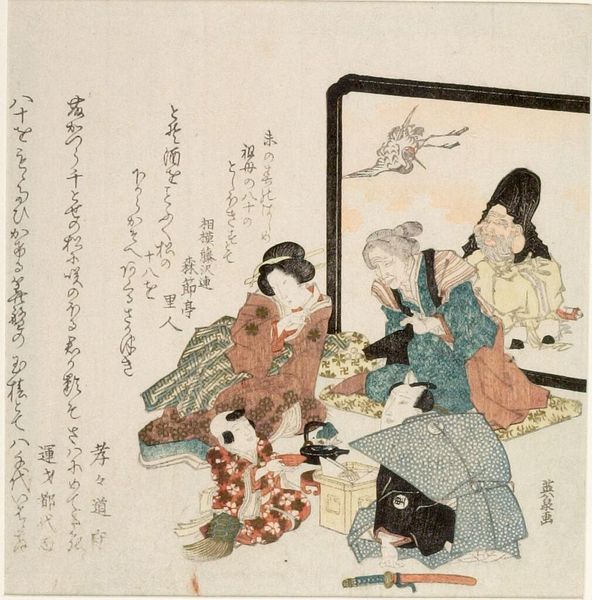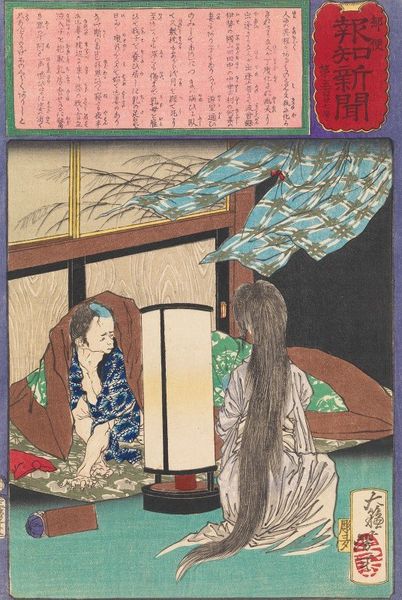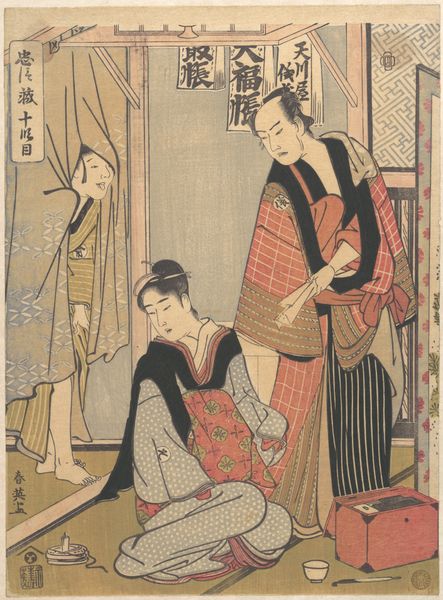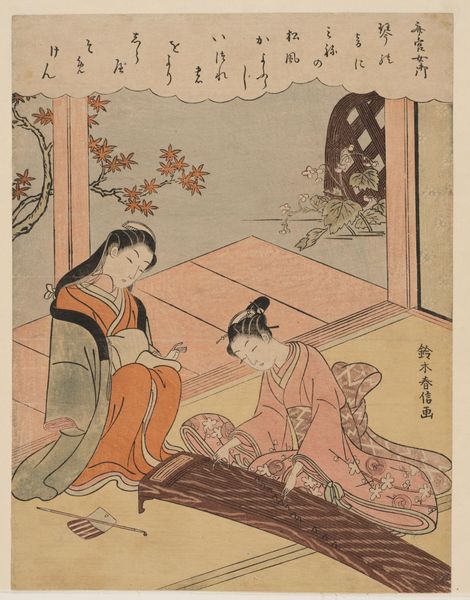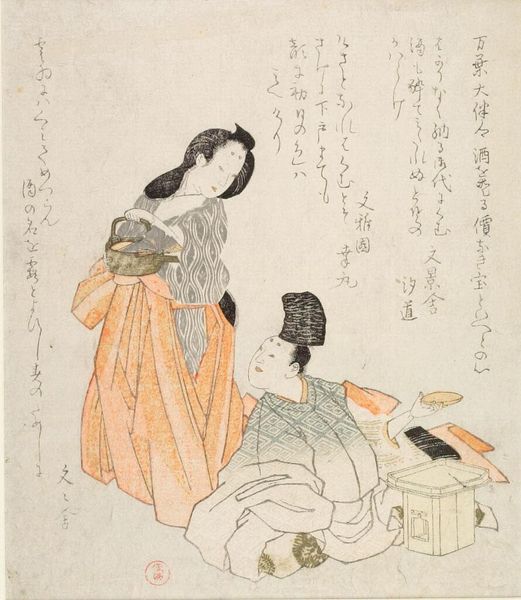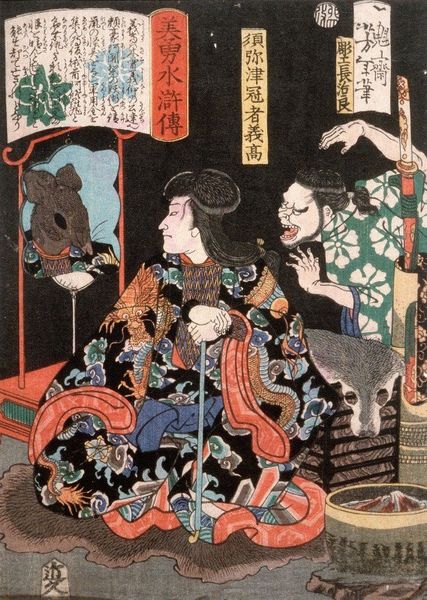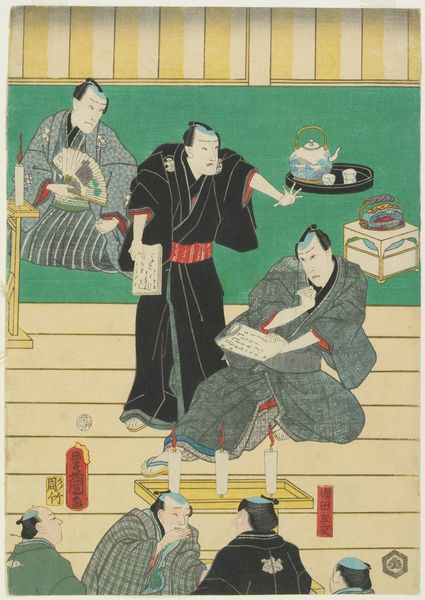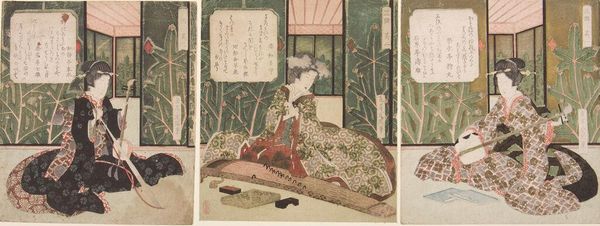
Copyright: Public Domain: Artvee
Curator: Yoshitoshi's "Dissolute Drinker; A Couple by a Window," created in 1879 using the woodblock print medium, presents an intimate scene. It strikes me as a work steeped in quiet desperation. What do you make of it? Editor: The scene is indeed intimate, but I sense a certain melancholy too. The figures seem trapped, maybe even bored. How do you interpret the scene? Curator: I see this piece as a commentary on the social realities of the Meiji era in Japan. While the period promised modernization, it also led to the erosion of traditional social structures and moral values. Could this “dissolute” drinking be a symptom of larger anxieties about identity and purpose during a time of radical societal shift? Editor: That’s fascinating! So you see the figures' behaviour less as a personal failing and more as a response to external pressures? Curator: Precisely! Consider the female figure; is she choosing this life, or is she limited by the societal roles available to her? Also, how might economic anxieties shape these choices for both the man and the woman depicted? This reading encourages us to view ukiyo-e, which are often perceived simply as beautiful images, as works capable of articulating social and political concerns. Editor: It makes me wonder if Yoshitoshi was subtly critiquing the government’s push for Westernization at the expense of cultural identity. Curator: Exactly. Art often becomes a mirror reflecting societal tensions and individual struggles within broader power structures. These aren’t just pictures of people drinking, but visual testaments to a complex moment in history. Editor: This has really changed how I see this print. Thanks for expanding my understanding. Curator: And thank you for providing such thoughtful initial impressions. It helps reveal the many layered stories these works contain.
Comments
No comments
Be the first to comment and join the conversation on the ultimate creative platform.
